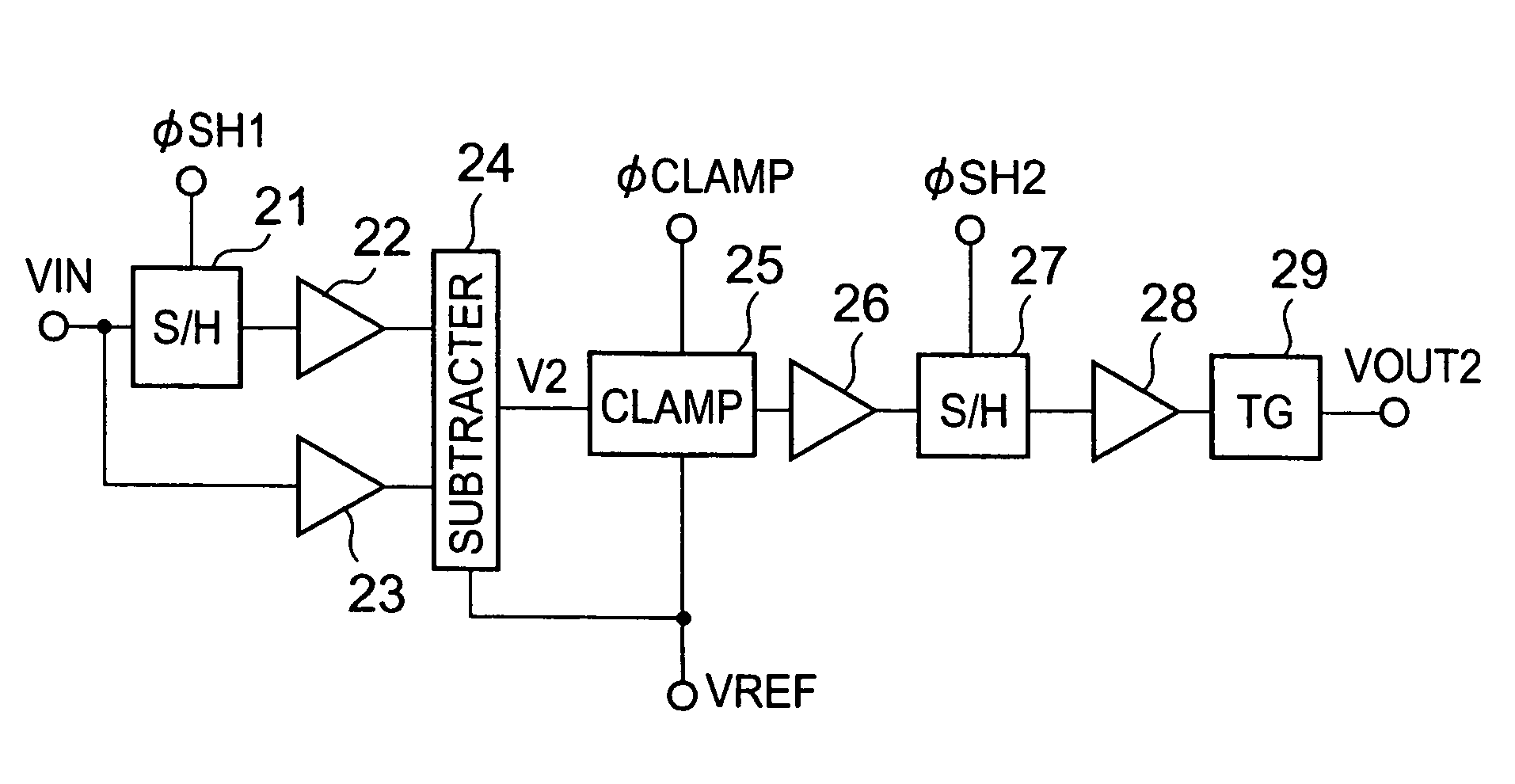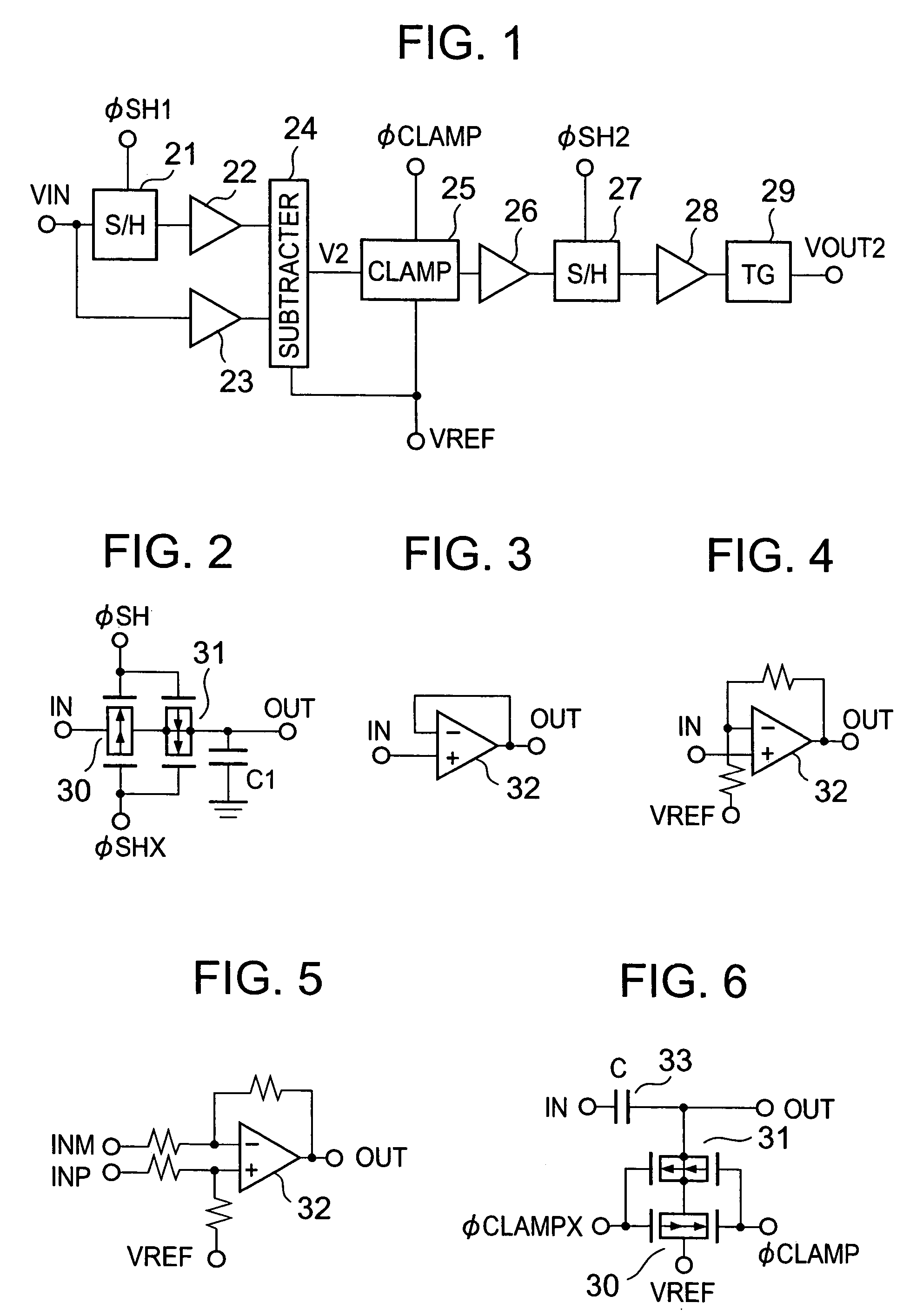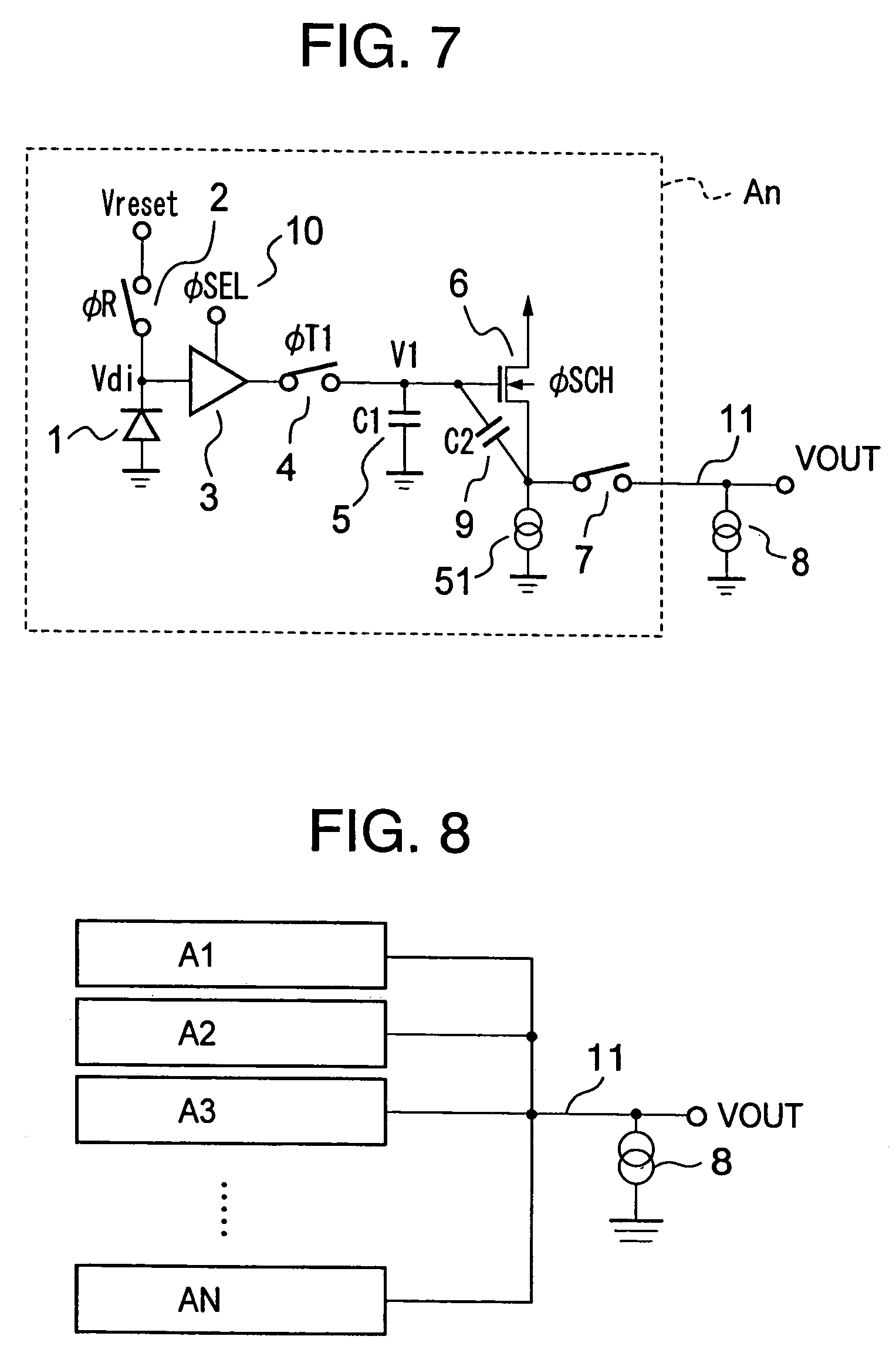Signal processing circuit, image sensor IC, and signal processing method
a signal processing circuit and image sensor technology, applied in the field of signal processing circuits, can solve the problems of increasing the number of constituent elements, amplifiers are also amplified, circuits of amplifier chips cannot cope, etc., and achieve the effects of reducing thermal noise of reference voltage, reducing dispersion of ics, and large capacity
- Summary
- Abstract
- Description
- Claims
- Application Information
AI Technical Summary
Benefits of technology
Problems solved by technology
Method used
Image
Examples
first embodiment
[0055]FIG. 1 is a block diagram of a signal processing circuit according to a first embodiment of the present invention. A signal is inputted to a sample / hold circuit 21 and a buffer amplifier 23 through an input terminal VIN. An output signal of the sample / hold circuit 21 is inputted to a buffer amplifier 22. An output signal of the buffer amplifier 22 and an output signal of the buffer amplifier 23 are inputted to a subtracter 24, an output signal of which is in turn inputted to a voltage clamp circuit 25. A reference voltage for the subtracter 24 and a reference voltage for the voltage clamp circuit 25 can be made common to each other. Then, respective terminals of the subtracter 24 and the voltage clamp circuit 25 are connected to a terminal VREF. An output signal of the voltage clamp circuit 25 is inputted to a buffer amplifier 26. Note that the buffer amplifier 26 may be replaced with an amplification circuit. Moreover, a terminal at which a reference voltage for this amplific...
second embodiment
[0077]FIG. 10 is a schematic circuit diagram of a photoelectric converter according to a second embodiment of the present invention. The number of sets of constituent elements provided inside a frame of a photoelectric conversion block An shown in FIG. 10 is identical to the number of pixels. A channel selection switch 7 of each block is connected to a common signal line 11. Note that the photoelectric conversion block An shows a photoelectric conversion block of an n-th bit. A diagram of a configuration of the whole photoelectric converter is shown in FIG. 8. The configuration is the same as that in the first embodiment of the present invention.
[0078]The circuit of the photoelectric conversion block An includes: a photodiode 1 serving as a photoelectric conversion unit; transfer switches 14, 15, 16, and 17 serving as an electric charge transfer unit; a reset switch 2 serving as a reset unit; an amplification unit 3; a capacitor 13 for holding an optical signal; a capacitor 12 for h...
third embodiment
[0092]FIG. 12 is a schematic diagram of a close contact type image sensor according to a third embodiment of the present invention. This close contact type image sensor includes three image sensor ICs 41. Each image sensor IC 41 includes a signal processing circuit 42, a photoelectric converter 43, a reference voltage circuit 44, a resistor 45, a reference voltage terminal 46, and a signal output terminal 47. A common signal line of the photoelectric converter 43 is connected to the signal processing circuit 42, and an output terminal of the signal processing circuit 42 is connected to the signal output terminal 47. In addition, a reference voltage of the signal processing circuit 42 appears at the reference voltage terminal 46, and a resistor 45 is provided between the reference voltage circuit 44 and the reference voltage terminal 46.
[0093]The signal output terminals 47 of all the image sensor ICs 41 are connected to one another in the outside, and output signals of all the image ...
PUM
 Login to View More
Login to View More Abstract
Description
Claims
Application Information
 Login to View More
Login to View More - R&D
- Intellectual Property
- Life Sciences
- Materials
- Tech Scout
- Unparalleled Data Quality
- Higher Quality Content
- 60% Fewer Hallucinations
Browse by: Latest US Patents, China's latest patents, Technical Efficacy Thesaurus, Application Domain, Technology Topic, Popular Technical Reports.
© 2025 PatSnap. All rights reserved.Legal|Privacy policy|Modern Slavery Act Transparency Statement|Sitemap|About US| Contact US: help@patsnap.com



